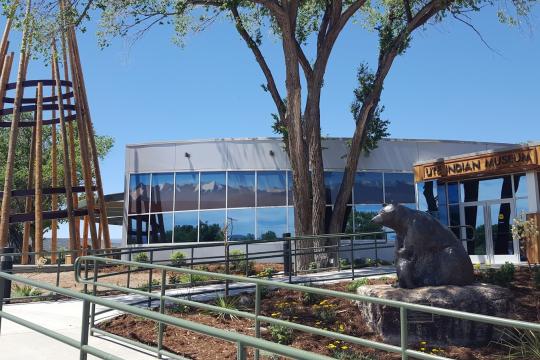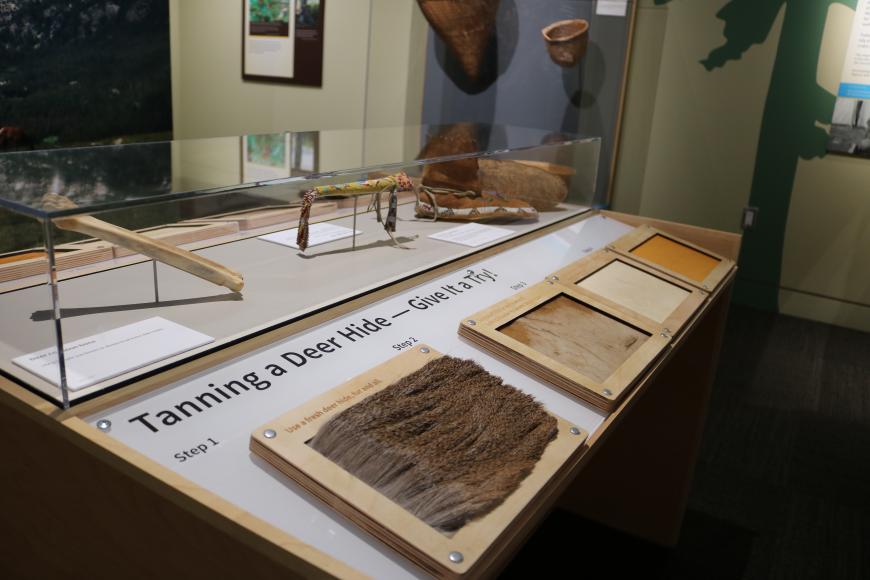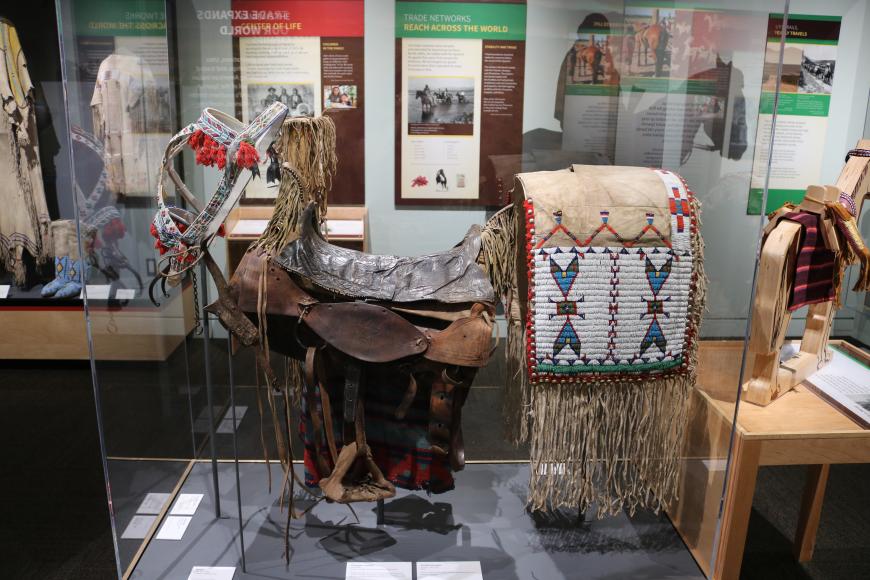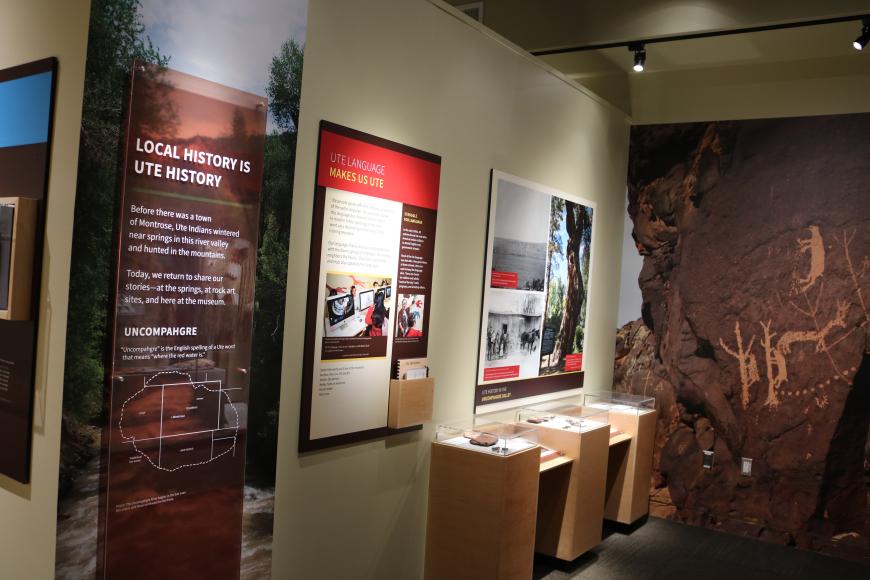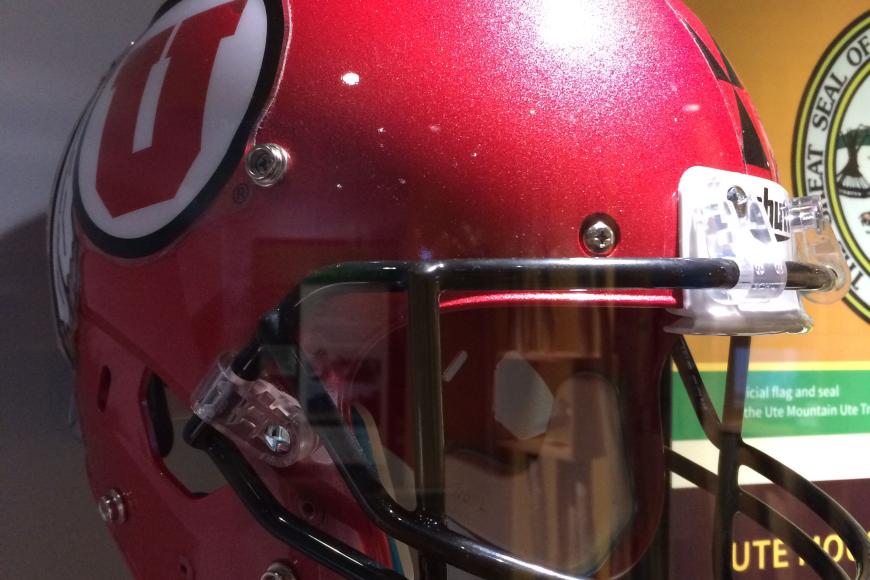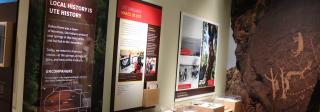
Ute Indian Museum Exhibit
Written On the Land
In the summer of 2017, the Ute Indian Museum reopened with renovations, expanded exhibit space, and a newly enriched exhibit. This exhibit, the product of over three years of work and consultation with the three Ute tribes, —the longest continuous residents of Colorado. In the exhibits, visitors take a journey to iconic places across Colorado to learn the story of Ute life, history and culture. Told in the voices of tribal members, the exhibits include contemporary views of Ute life, including cultural survival, political self-determination, economic opportunity and the celebration of the Bear Dance.
With approximately 200 artifacts, the exhibits will feature artifacts that have never been on display including a velvet dress belonging to Chipeta and a painted hide. Objects that highlight contemporary Ute life including a beaded cell phone case, an oil rig drill bit, and a Bear Dance shawl will also be displayed. Many beloved artifacts will be returning to the museum especially belongings of Ute leaders Chief Ignacio, Chief Buckskin Charley, Chief Ouray and Chipeta.
This exhibit was created in conjunction with the three Ute tribes, to ensure that their story is told in their own voice.
We acknowledge that the land currently known as Colorado has been the traditional homelands of Indigenous peoples since time immemorial. We are grateful to work in partnership with the 48 sovereign nations who continue to call this land home. Together, we plan exhibits; collect, preserve, and interpret artifacts; do archaeological work; tell the stories of Colorado's original peoples in our publications; and create educational programs to share the history of Colorado.

